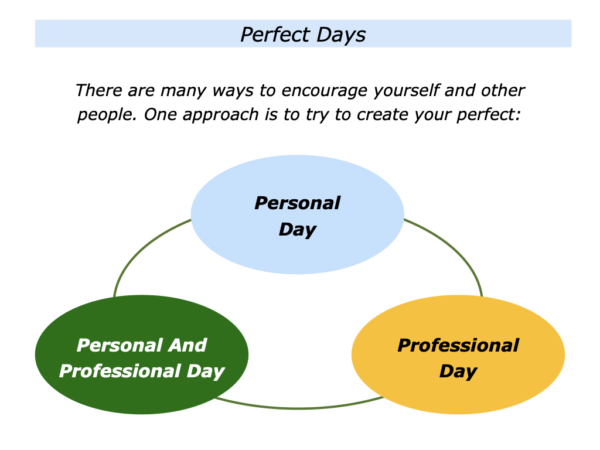
“Near death experiences focus the mind,” we are told. One outcome can be that they encourage us to focus on what is important in life.
This section describes exercises inspired by Eugene O’Kelly, who wrote Chasing Daylight. Diagnosed with a terminal illness, he and his loved ones aimed to create perfect moments, hours and days.
Clarifying your perfect personal day
Imagine you could craft your perfect personal day. Maybe you would like to spend time with special people, create things or simply enjoy the moments. What would you like to feel at the end of the day?
If you wish, try tackling the exercise on this theme. Start by brainstorming and then clarifying your day. You aim:
To have a leisurely breakfast … To go for a run … To spend time with your children … To work in the garden … To listen to music, paint, write or do some other creative activity … To enjoy a siesta … To go for a walk … To visit the theatre.
You may also wish to sketch out different kinds of perfect personal days. If you wish, try completing the following exercise.
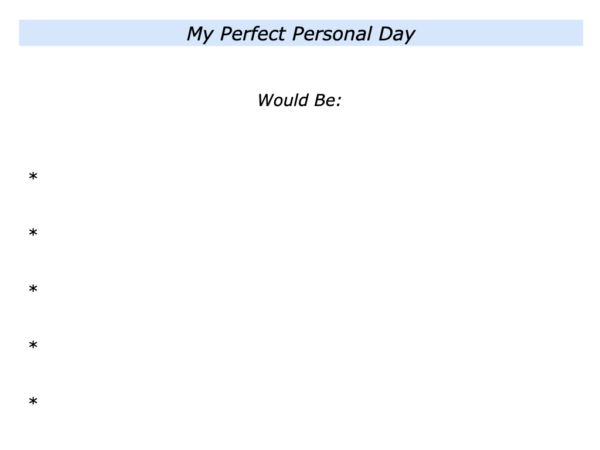
Clarifying your
perfect professional day
Imagine you could craft your perfect professional day. What would you like to do during such a day? What would you like to feel at the end of the day?
People often like to follow their own rhythm during the day rather than be side tracked. How could you try, as far as possible, to feel in control of shaping your day?
How could you set up the day to succeed? How could you make good use of your prime times, the times of the day when you have most energy?
How could you spend time on stimulating projects? How could you set aside time to gather your thoughts during the day? How could you gain a sense of accomplishment from the day?
Different people will obviously have different days. For example, you may aim:
To get to work early … To spend time with a coffee rehearsing the day ahead … To spend most of the day doing what you do best … To spend time with stimulating customers.
To eat something healthy and nourishing every 2 hours … To set aside time for yourself halfway through the day … To rehearse the rest of the day … To help others to succeed … To do things that enable you to feel fulfilled at the end of the day.
Again, you may have several different kinds of perfect professional days. If you wish, try completing the following exercise.
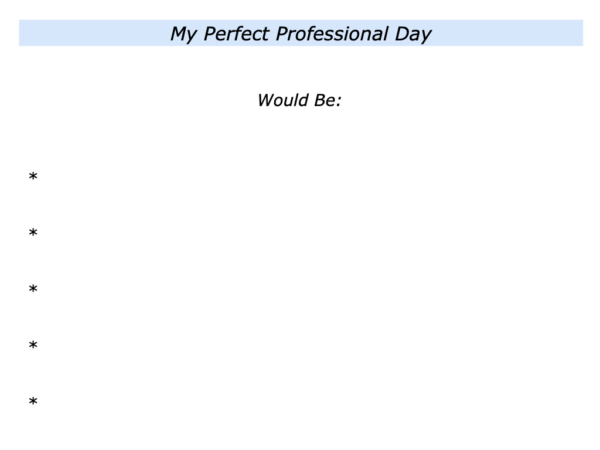
Clarifying your perfect
personal and professional day
Imagine that you want to combine elements of your perfect personal and professional day. This is something that many people tried to do during Covid. If you wish, try tackling the exercise on this theme. This invites you to map out such a day.
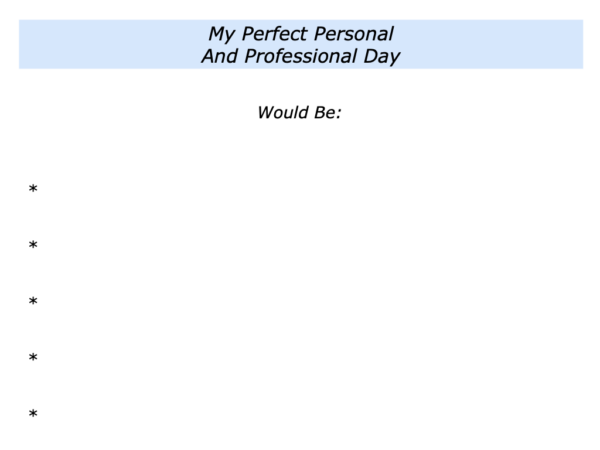
Creating elements
of your perfect days
Life is for living: everything is temporary and nothing is permanent, we are told. Perfection may not be attainable and things may not always work out. But each day may be perfect with its imperfections.
Looking ahead, how would you like to introduce parts of your perfect days into your personal and professional life? How can you make this happen?
Some people go for a radical solution. They wipe the slate clean and start building their life around the things that are satisfying. Some people choose a different approach. They begin introducing elements of their perfect days into their actual days.
Such people begin with a few things. They may start the day by listening to their favourite music, spending more time with their favourite customers, building in times for reflection or whatever.
They then begin adding more elements, joining these together like a row of pearls. They develop the habit of doing more things that constitute their perfect days.
If you wish, try tackling the exercise on this theme. This invites you to do the following things.
Describe the specific things you can do to take steps towards creating your perfect days.
Describe the specific benefits of doing these things – both for you and for other people.
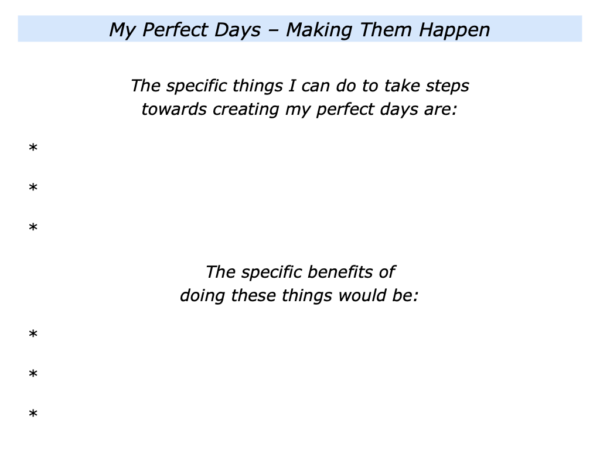






Leave a Reply